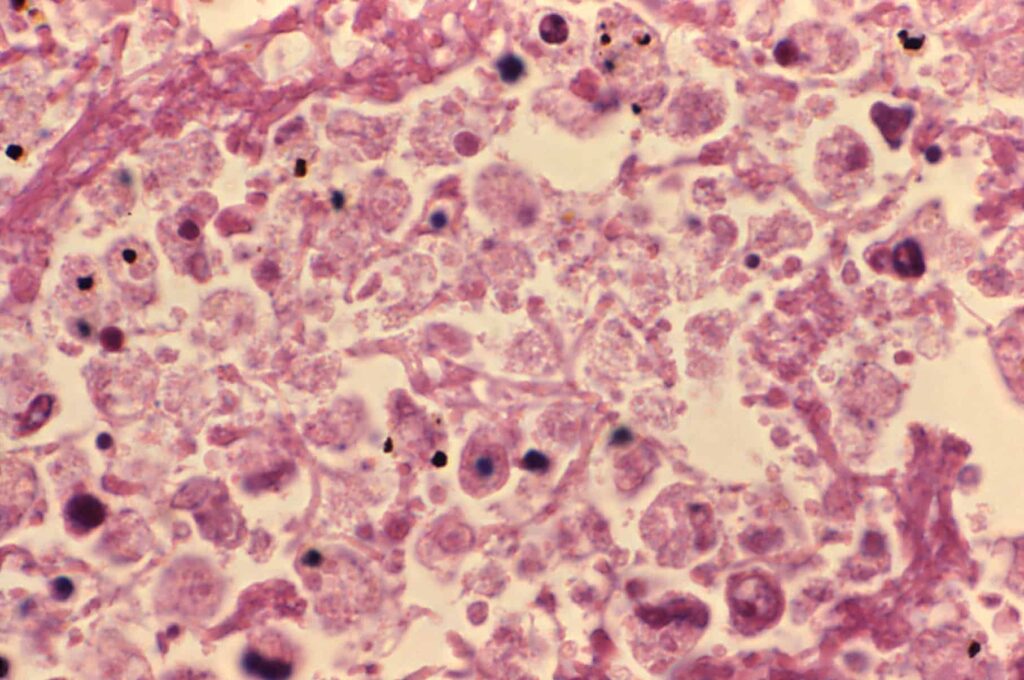 Eleven lawsuits have been filed against the State of Illinois over a fatal outbreak of Legionnaires’ disease in a western Illinois veterans’ home. Three outbreaks have occurred in the facility since 2015, leaving a total of 13 dead and at least 61 sickened.
Eleven lawsuits have been filed against the State of Illinois over a fatal outbreak of Legionnaires’ disease in a western Illinois veterans’ home. Three outbreaks have occurred in the facility since 2015, leaving a total of 13 dead and at least 61 sickened.
What Is Legionnaires’ Disease?
Legionnaires’ disease is a form of waterborne pneumonia. It is caused by infection with the bacterium Legionella pneumophila, which may be found naturally in fresh water. The bacterium can contaminate air conditioner cooling towers, hot tubs, water tanks, showers, sinks, and fountains. Legionella is spread when people breathe in mist that contains the bacteria, though it does not typically spread directly between people.
Legionnaires’ disease has an incubation period of two to ten days, meaning that it may take that long for people exposed to the bacterium to develop or show signs of infection. Early symptoms may include muscle pains, headaches, and general discomfort (malaise), while later ones may include dry coughing, shortness of breath, high fever, abdominal pain, nausea, vomiting, and diarrhea. In extreme cases, the disease can result in coma and death.
While anyone could be infected, Legionnaires’ disease typically targets those who are already in a vulnerable or weakened state, including the elderly, diabetics, smokers, and those with poor immune function or chronic lung disease.
Roughly 1,000 cases of Legionnaires’ disease are reported to the Centers for Disease Control and Prevention (CDC) each year, though this number is likely far lower than the actual infection rate for the disease since medical professionals typically do not look out for it.
Legionnaires’ disease is treated with antibiotics, including fluoroquinolones, doxycycline, and azithromycin, though there is no current vaccination available to prevent the illness. Approximately 10% of those infected with Legionnaires’ disease die.
First Outbreak: 2015
The earliest known case of Legionnaires’ disease at the state-run Illinois Veterans’ Home in Quincy, IL was reportedly found on July 24, 2015. The number of known infections had grown to eight by August 27, when the first state press release announced the Legionnaires’ disease outbreak.
At least two of the lawsuits referenced this alleged delay in announcing the outbreak, contending that residents were not informed of a known and potentially fatal risk.
From July through September 2015, more than 60 residents and staff members became infected with Legionnaires’ disease at the facility. Ultimately, twelve residents died and at least 53 people were sickened during this first outbreak of the disease.
“The Cleanest Water, Probably, in the State”
Following the initial outbreak, the state began “significant remediation efforts” to correct the problem, including imposing new treatment protocols and making emergency upgrades to the nearly 132-year-old facility’s water treatment system. The cost of these reforms is estimated at nearly $6.4 million to date.
On June 29, 2016, in response to the efforts, Illinois Department of Veterans’ Affairs Director Erica Jeffries told a local reporter that “We’ve got the cleanest water, probably, in the state.”
Second Outbreak: 2016
From July through August 2016, five more residents contracted Legionnaires’ disease, though none of these infections proved to be fatal.
This second wave of Legionnaires’ disease infections led to a June 2017 CDC analysis of the causes of the outbreak. According to the CDC, testing showed that those who became sickened in 2016 may have been exposed to Legionella by a therapy tub, a kitchen sprayer, and/or the in-room sinks.
While praising the post-2015 improvements at the Illinois Veterans’ Home, the CDC’s report specifically cited the facility’s “potable water system” as posing a “potential risk for Legionella growth and transmission.”
Specifically, the network of galvanized piping, some of which is more than a century old, contains “extensive sedimentation and biofilm” that may be “associated with persistent positive Legionella culture results from point-of-use fixtures.”
Third Outbreak: Fall 2017
Following the CDC’s report, the Illinois Veterans’ Home experienced a third outbreak of Legionnaires’ disease in Fall 2017. Three residents were infected, one of whom died.
Director Jeffries insists that the facility has acted on the CDC’s recommendations following the first two outbreaks with a series of infrastructure upgrades and protocol changes. For example, employees at the Illinois Veterans’ Home have been trained to better respond to symptoms of pneumonia, with chest X-rays and urine testing for Legionnaires’ disease now ordered automatically. Health care workers also administer antibiotics to potentially infected patients, even before test results come back.
Additionally, special filters designed to screen out Legionella are being attached to every sprayer and shower head and replaced on a monthly basis, while the water treatment system has reportedly been rebuilt “from the ground up,” with new water heater tanks in every building.
What the Illinois Department of Veterans Affairs has not done at the Quincy facility, by its own admission, is to “remove all the piping and start again,” citing the sheer magnitude and expense of taking out “miles and miles” of plumbing, much of it dating back to the home’s founding.
While the exact cost of such a project is unknown, Director Jeffries said it could be “ballparked…north of $500 million.”
When asked if the Illinois Veterans’ Home could ever be fully free of Legionella with its original plumbing system in place, Director Jeffries conceded “Probably not.”
Lawmakers Calling for Action
Director Jeffries’ answer appears not to have satisfied high-profile critics of the state’s handling of the Legionnaires’ disease outbreaks at the Illinois Veterans’ Home. Sen. Dick Durbin has called for the facility to be shuttered until the water system is completely safe. Both Sen. Durbin and Sen. Tammy Duckworth, former head of the state Veterans’ Affairs department from 2006 to 2009, have called for a “review of [the department’s] leadership given this troubling pattern of the presence of Legionella at IVH Quincy three years in a row.”
Cap on Financial Compensation
Similarly outraged are many of the family members of residents who have succumbed to Legionnaires’ disease at the Quincy facility. So far, eleven lawsuits have been filed by these families against the State of Illinois, alleging that the state’s negligence and lack of communication led to their loved ones’ early demise.
These lawsuits may face an uphill battle. So far, the State of Illinois has officially accepted no legal responsibility for the 2015 Legionnaires’ disease outbreak. Moreover, should these lawsuits prove successful, the amount the families can recover is limited. While other Legionnaires’ disease lawsuits have yielded outcomes in the millions of dollars, because these deaths occurred in a state nursing home facility, Illinois law caps any potential awards at $100,000.00.
Nevertheless, the families who have gone on record about their lawsuits have insisted that they are not motivated by financial compensation – they just want to see the problem get solved.
<< BACK TO BLOG POSTS